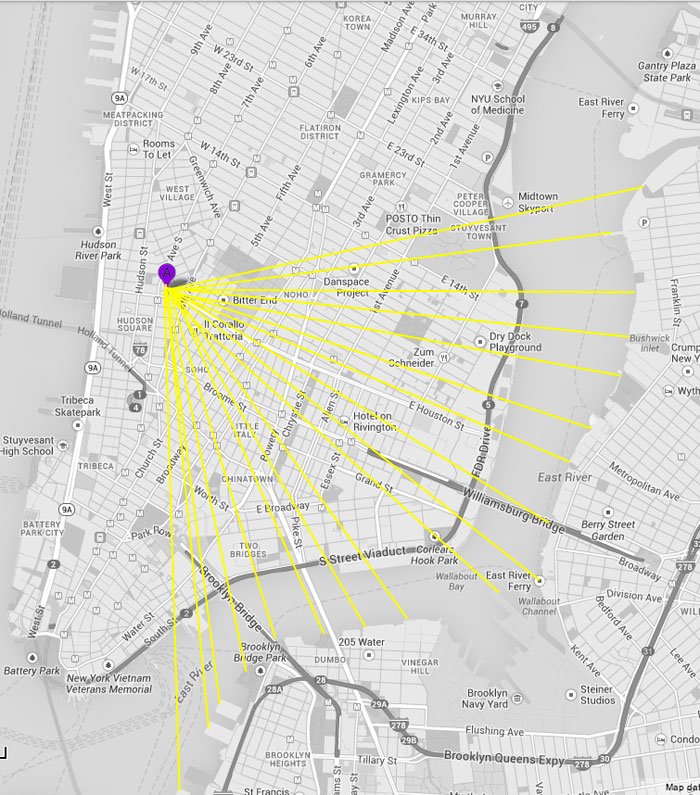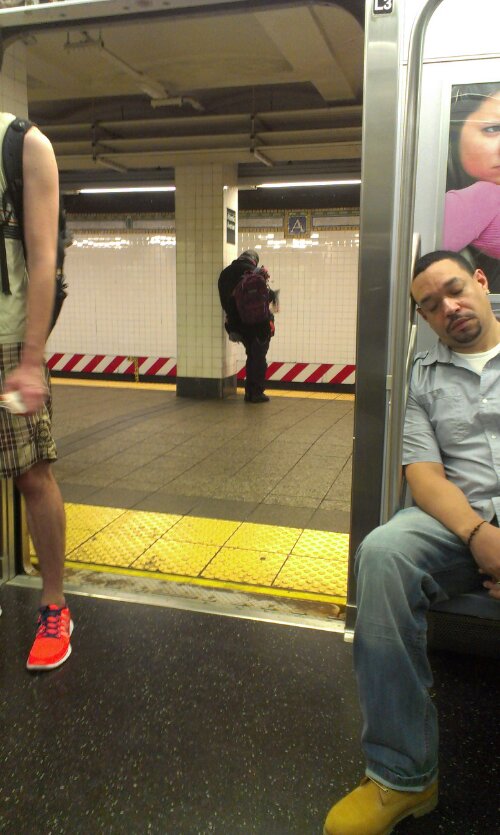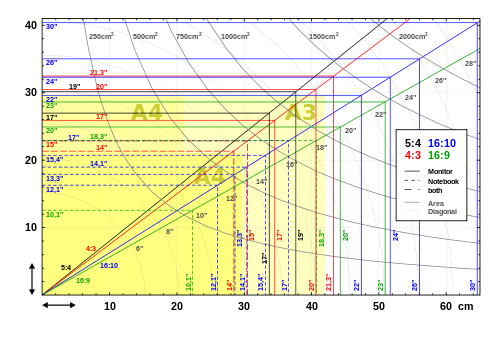
Last night I met a friend for a drink at a place called the Brooklyneer, a Brooklyn-themed restaurant in Manhattan. To stress the weirdness of this, let me over-explain: this is a bar that takes its decor, name, and menu inspiration from another sector of the same city. Like you would open a Thai restaurant that takes its inspiration from Thailand.
To stretch that metaphor, much like many Thai restaurants take their menu and decor from one specific, popularized region of Thailand (Bangkok/Central) and its culture without specifically declaring that distinction, the Brooklyneer is not pulling from all over Brooklyn (pop. 2.5 million, roughly the same as Nevada or Jamaica) for its cultural selection. No, it’s aiming squarely for the culture of what I’ll call Brooklyn Export, a consumer-friendly style that is pretty thoroughly entrenched in the Williamsburg, Greenpoint, and Bushwick neighborhoods of Brooklyn with swaths of Red Hook, Fort Greene, Clinton Hill, and Park Slope as well. Dark wood. Antique motifs. Ethnic flourish + hearty American fare. Craft/Organic/Artisinal/Etc. In this sense, Brooklyn is being referred to not so much a place as a brand. A promise of a certain consumer experience. Thai restaurants, Disneyland, dude ranches, etc.
This isn’t weird at all. This is what the globalized world does and has done since antiquity. Greek wine merchants in Phoenicia, the courtly trappings of Central American Empires brought north to the Mississippi River Civilizations, goddamn red-doored English pubs everywhere. What’s weird is the location. The proximity to its inspiration. 2.4 miles, walking distance. In under an hour (half an hour if it’s urgent and you’re running) you could have that same Brooklyn Brewery beer, that same kimchi-topped hotdog in your hand.
It gave me a feeling of the shattering of location-based culture. That even export versions of a local culture could be had in damn near the same spot as its original version still stands. I wrote down on a napkin: “hall of mirrors. The Starbucks in a Starbucks”
And enclaves/exclaves… I got thinking about China Mieville’s excellent The City and the City, a crime story about investigators tracking murders through a divided city that overlapped in places, divided not by walls but by a scrupulously maintained unseeing by both populations as their lives overlapped on the streets.
A quote:
“You cannot train yourself to successfully and sustainedly unsee and unhear you do them all the time, but they also fail, repeatedly, and you cheat, repeatedly, in all sorts of small ways. The book mentions that several times. It is absolutely about absolute fidelity to those particular urban protocols, exaggerations or extrapolations of the ones that I think are all around us all the time in the real world; but it’s also about cheating them, and failing them, and playing a little fast and loose, which I think is an inextricable part of such norms.”
Like Besźel and Ul Qoma in Mieville’s novel, New York has its own overlapping territories. Places adjacent that seem to live in different times, different countries. A physical substrate, yes, but that’s just what holds up this multitude of shared hallucinations, holograms folded through each other, shimmering in the concrete-amplified wet heat of summer. It’s a city with all four-dimensions stretched and broken and chewed on by use, neglect, experimentation, by an infinite number of schemes to squeeze one last dollar from it all.
Naturally, the beers were $7. It’s in Manhattan, after all.


